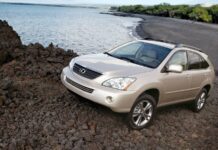Nissan is set to launch the 2026 Rogue Plug-in Hybrid, a vehicle that stands out not for innovation, but for its blatant rebadging of the Mitsubishi Outlander PHEV. This move highlights a trend in the automotive industry where manufacturers sometimes opt for cost-cutting measures over originality, particularly when facing financial pressures.
The Rogue PHEV arrives in US dealerships early in 2026, offering three rows of seating and two trim levels. However, beyond the Nissan badge, grille insert, and minor trim differences, the vehicle is virtually identical to its Mitsubishi counterpart. Nissan’s press release conspicuously avoids any mention of the Outlander, raising questions about transparency and branding strategy.
Why This Matters: The Rogue PHEV’s rebadging is not an isolated incident. The industry has seen similar moves, particularly in the 1980s and 1990s with Australia’s “Button Plan,” where vehicles like the Ford Falcon ute were sold as the Nissan Ute. Today, such badge-engineering is more common in kei cars and commercial vehicles, but Nissan’s move extends it to a mainstream SUV.
Technical Specs: The Rogue PHEV uses a 2.4-liter four-cylinder engine paired with front and rear electric motors, delivering a total output of 182kW and 450Nm. Its 20kWh battery provides an electric range of 61km. Notably, this is the pre-update Outlander PHEV model, missing out on the newer 22.7kWh pack and larger battery in the refreshed Outlander.
What’s Missing: The Rogue PHEV lacks several features found in the updated Outlander, including ventilated front seats, a Yamaha sound system, and the newer 12.3-inch infotainment touchscreen. These omissions further emphasize the minimal effort taken to differentiate the rebadged model.
Industry Context: Mitsubishi has also engaged in similar rebadging practices, with models like the ASX (a Renault Captur) and the Colt (a Renault Clio) bearing only subtle exterior differences. This trend suggests a growing willingness among manufacturers to share platforms and minimize development costs.
Financial Factors: Nissan’s decision to rebadge the Outlander rather than integrate PHEV technology into its Rogue is likely driven by financial constraints. A rebadge allows Nissan to quickly enter the plug-in hybrid market without significant investment.
Conclusion: The Nissan Rogue PHEV is a clear example of badge-engineering, a practice that has resurfaced in the automotive industry. While cost-effective for Nissan, it raises questions about brand identity and customer transparency. The move underscores a trend where manufacturers prioritize speed to market over originality, particularly in financially challenging times




































